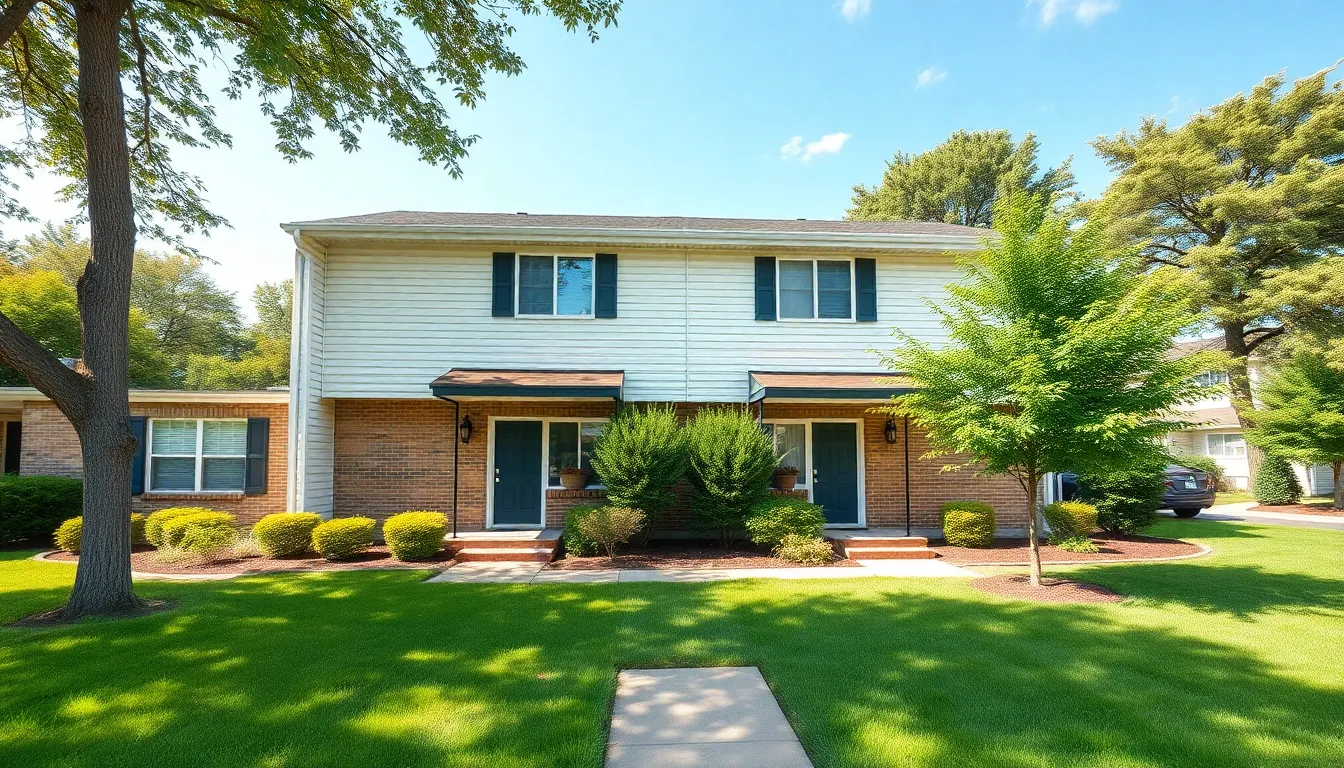Investing in a multi-family home can feel like trying to solve a Rubik’s Cube blindfolded. But fear not! With the right down payment strategy, you can unlock the door to your financial future. Imagine living in one unit while your tenants help pay your mortgage. Sounds like a dream, right?
Table of Contents
ToggleUnderstanding Down Payments for Multi-Family Homes
Down payments play a crucial role in the purchase of multi-family homes. These initial payments significantly impact the financing process and overall investment strategy.
What is a Down Payment?
A down payment refers to the upfront cash payment made when purchasing a property. Typically, it constitutes a percentage of the property’s total price. For multi-family homes, down payment requirements often range from 3.5% to 20%, depending on the financing option. Lenders evaluate this initial investment to determine loan approval and terms. Investors must prepare their finances to cover this substantial upfront cost.
Importance of Down Payments
The importance of down payments extends beyond mere investment figures. A higher down payment reduces monthly mortgage payments, directly influencing cash flow. It may also improve chances for loan approval, as lenders often favor borrowers with substantial equity in the property. Effective down payment strategies can provide leverage in negotiations, potentially yielding better purchase prices. Building equity through down payments sets a strong foundation for future real estate endeavors.
Types of Multi-Family Homes

Multi-family homes come in various types, each serving unique investment strategies and lifestyle preferences.
Duplexes
Duplexes consist of two units sharing a common wall. Each unit often features separate entrances and amenities, allowing for tenant privacy. Investors appreciate duplexes for their potential rental income while living in one unit. Rental income generated can offset mortgage payments, making this an appealing option for new landlords. Furthermore, financing a duplex often requires a lower down payment than larger multi-family properties, enhancing accessibility for first-time buyers.
Triplexes and Fourplexes
Triplexes contain three units, while fourplexes feature four. Both types offer increased rental income potential due to multiple tenants. Investors benefit from economies of scale when managing multiple units. Each unit typically has its own entrance, ensuring tenant privacy and independence. With the right down payment, buyers can secure financing more easily, leading to promising returns on investment. Monthly mortgage payments become manageable through rental income, boosting long-term financial stability.
Down Payment Requirements
Understanding down payment requirements is essential for successful investment in multi-family homes. These upfront payments vary based on financing options and can greatly affect the overall investment strategy.
Conventional Loans
Conventional loans typically require a down payment ranging from 5% to 20% of the property’s total price. Borrowers with a higher credit score often enjoy lower down payment options. Though a larger down payment leads to reduced monthly mortgage payments and better loan terms, the absence of private mortgage insurance is another advantage for those putting down 20% or more. Lenders assess borrowers’ financial stability, considering income, credit history, and debt-to-income ratios.
FHA Loans
FHA loans cater to buyers with a down payment as low as 3.5%. This program is particularly beneficial for first-time homebuyers or those with limited funds. It’s important to note that borrowers must meet specific credit score requirements, typically set at a minimum of 580 for the reduced down payment. FHA loans facilitate easier approval for low to moderate-income households and allow multifamily home purchases with up to four units, unlocking potential rental income streams.
VA Loans
VA loans offer a significant advantage by eliminating the down payment requirement for eligible veterans and active service members. With zero down payment, these loans also come with competitive interest rates, contributing to affordability. Borrowers must obtain a certificate of eligibility to qualify for VA loans, which is straightforward for those with qualifying military service. This financing option supports the purchase of multi-family properties, fostering financial growth for veterans while enabling them to secure additional rental income.
Strategies for Saving for a Down Payment
Saving for a down payment on a multi-family home requires careful planning and strategic approaches. Implementing effective strategies can help prospective buyers accumulate the necessary funds.
Budgeting Tips
Creating a detailed budget serves as a cornerstone for successful saving. Tracking monthly income and expenses ensures awareness of spending habits. Setting specific savings goals can motivate individuals to set aside a portion of their income each month. Establishing an emergency fund also safeguards against unexpected expenses while still prioritizing savings. Cutting unnecessary expenses, such as subscriptions, can free up additional capital for savings. Seeking out a high-yield savings account helps maximize interest earnings, accelerating the growth of savings.
Assistance Programs
Numerous assistance programs exist to help homebuyers secure down payments. Government programs like FHA loans allow first-time buyers to make lower down payments, sometimes as little as 3.5%. State and local housing authorities often provide grants or forgivable loans to assist with down payments. These programs typically require eligibility criteria, such as income limits and home purchase price limits. Additionally, employer-sponsored homebuyer assistance programs may offer financial help to employees seeking to purchase homes. Researching available options ensures buyers can leverage resources that best suit their needs.
Investing in a multi-family home can be a rewarding venture that provides both financial benefits and lifestyle advantages. A well-planned down payment strategy is essential in navigating the complexities of this investment. By understanding financing options and leveraging available assistance programs, prospective buyers can position themselves for success.
With careful budgeting and savings tactics, achieving that initial cash payment becomes more attainable. Ultimately, the right down payment not only facilitates the purchase but also enhances long-term financial stability and growth in the real estate market. Embracing this opportunity can lead to a prosperous investment journey.



